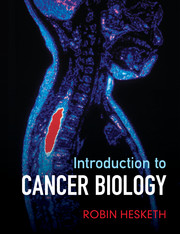Book contents
- Frontmatter
- Contents
- Acknowledgements
- Foreword
- Introduction
- 1 Lessons from epidemiology
- 2 Causes of cancer
- 3 Signalling in normal cells
- 4 ‘Cancer genes’: mutations and cancer development
- 5 What is a tumour?
- 6 Cancer signalling networks
- 7 The future of cancer prevention, diagnosis and treatment
- 8 The future of cancer in the post-genomic era
- Appendix A Tumour grading and staging
- Appendix B Targets of specific anti-cancer drugs
- Appendix C Classes of major oncoproteins
- Appendix D Major tumour suppressor genes
- Appendix E Ten major cancers at a glance
- Glossary and abbreviations
- Bibliography
- Index
- Plate Section
7 - The future of cancer prevention, diagnosis and treatment
Published online by Cambridge University Press: 05 February 2013
- Frontmatter
- Contents
- Acknowledgements
- Foreword
- Introduction
- 1 Lessons from epidemiology
- 2 Causes of cancer
- 3 Signalling in normal cells
- 4 ‘Cancer genes’: mutations and cancer development
- 5 What is a tumour?
- 6 Cancer signalling networks
- 7 The future of cancer prevention, diagnosis and treatment
- 8 The future of cancer in the post-genomic era
- Appendix A Tumour grading and staging
- Appendix B Targets of specific anti-cancer drugs
- Appendix C Classes of major oncoproteins
- Appendix D Major tumour suppressor genes
- Appendix E Ten major cancers at a glance
- Glossary and abbreviations
- Bibliography
- Index
- Plate Section
Summary
The science of treating cancer with specific chemicals as an adjunct to surgery and radiotherapy developed in the second half of the twentieth century, from the use of single agents to the administration of drug cocktails, with spectacular results for some types of cancer. By the beginning of the next millennium these had been joined by the first ‘targeted’ agents, namely kinase inhibitors and the first monoclonal antibodies. These advances have significantly expanded treatment options but one of the biggest obstacles remains that of drug resistance. The astonishing success of vaccines that prevent infection by human papillomaviruses (HPVs) is already making a major impact on the incidence of cervical carcinoma and other types of cancer caused by oncogenic forms of these viruses.
In parallel with these therapeutic and preventative advances, developments in imaging methods, both for tumour detection and monitoring response to therapy, are showing promise. The pressing need to define tumour biomarkers that can be detected at the earliest possible stage has brought the emerging sciences of proteomics and metabolomics to the fore while gene expression profiling has already made substantial contributions to the diagnosis and classification of tumours.
The development of anti-cancer drugs
Major developments in surgical methods essentially established the basis for cancer treatment in the early part of the twentieth century. The second half of that century saw the gradual introduction of chemicals for the treatment of disease and the foundation of the science of chemotherapy. In the most general sense chemotherapy means the chemical treatment of disease, something that has been practised since ancient times when the Egyptians used arsenic. However, we are here considering more recent developments, an example being taking penicillin for a bacterial infection that is indeed a course of chemotherapy. In common usage and in the present context the term refers to the use of chemicals to treat cancer, these agents being taken either singly or in combination, with the aim of killing tumour cells.
- Type
- Chapter
- Information
- Introduction to Cancer Biology , pp. 179 - 208Publisher: Cambridge University PressPrint publication year: 2012



